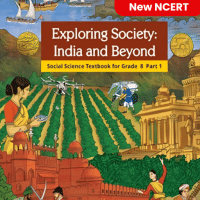Class 8 Exam > Class 8 Questions > Budding is found ina)Bacteriab)Protozoac)Plan...
Start Learning for Free
Budding is found in
- a)Bacteria
- b)Protozoa
- c)Planarian
- d)Hydra
Correct answer is option 'D'. Can you explain this answer?
Verified Answer
Budding is found ina)Bacteriab)Protozoac)Planariand)HydraCorrect answe...
Budding is a mode of asexual reproduction in which a small outgrowth develop on body surface that enlarge and get separated from parent body. Budding takes place in hydra and yeast.
Most Upvoted Answer
Budding is found ina)Bacteriab)Protozoac)Planariand)HydraCorrect answe...
Budding in Hydra:
Budding is a type of asexual reproduction where a new individual arises as an outgrowth from the existing organism. Hydra is a freshwater animal that belongs to the phylum Cnidaria. It is cylindrical in shape and can grow up to a length of 10mm.
Budding in Hydra occurs in the following way:
1. The process starts with the growth of a small bud on the body of the parent Hydra.
2. The bud gets nourished by the parent Hydra and grows in size.
3. The bud then develops a mouth and tentacles, and becomes a fully functional individual.
4. The bud eventually detaches from the parent Hydra and starts a new life as an independent organism.
Advantages of Budding in Hydra:
1. It is a fast and efficient way of reproduction.
2. It allows the parent Hydra to produce multiple offspring at once.
3. The offspring are genetically identical to the parent Hydra, which ensures that the desirable traits are passed on to the next generation.
4. Budding in Hydra ensures that the species can survive in diverse habitats, where there may be limited opportunities for sexual reproduction.
Conclusion:
Budding is an important mode of asexual reproduction in Hydra. It allows the species to thrive in diverse habitats and ensures the continuation of desirable traits in the next generation.
Budding is a type of asexual reproduction where a new individual arises as an outgrowth from the existing organism. Hydra is a freshwater animal that belongs to the phylum Cnidaria. It is cylindrical in shape and can grow up to a length of 10mm.
Budding in Hydra occurs in the following way:
1. The process starts with the growth of a small bud on the body of the parent Hydra.
2. The bud gets nourished by the parent Hydra and grows in size.
3. The bud then develops a mouth and tentacles, and becomes a fully functional individual.
4. The bud eventually detaches from the parent Hydra and starts a new life as an independent organism.
Advantages of Budding in Hydra:
1. It is a fast and efficient way of reproduction.
2. It allows the parent Hydra to produce multiple offspring at once.
3. The offspring are genetically identical to the parent Hydra, which ensures that the desirable traits are passed on to the next generation.
4. Budding in Hydra ensures that the species can survive in diverse habitats, where there may be limited opportunities for sexual reproduction.
Conclusion:
Budding is an important mode of asexual reproduction in Hydra. It allows the species to thrive in diverse habitats and ensures the continuation of desirable traits in the next generation.
Free Test
FREE
| Start Free Test |
Community Answer
Budding is found ina)Bacteriab)Protozoac)Planariand)HydraCorrect answe...
Option D: Hydra
Explanation:
The bulges in the hydra are the developing new individuals and they are called BUDS.
New individuals develop from these buds itself. As it includes only a single parent it is a type of asexual reproduction.
This type of asexual reproduction is called BUDDING.
please upvote my answer
Explanation:
The bulges in the hydra are the developing new individuals and they are called BUDS.
New individuals develop from these buds itself. As it includes only a single parent it is a type of asexual reproduction.
This type of asexual reproduction is called BUDDING.
please upvote my answer

|
Explore Courses for Class 8 exam
|

|
Question Description
Budding is found ina)Bacteriab)Protozoac)Planariand)HydraCorrect answer is option 'D'. Can you explain this answer? for Class 8 2025 is part of Class 8 preparation. The Question and answers have been prepared according to the Class 8 exam syllabus. Information about Budding is found ina)Bacteriab)Protozoac)Planariand)HydraCorrect answer is option 'D'. Can you explain this answer? covers all topics & solutions for Class 8 2025 Exam. Find important definitions, questions, meanings, examples, exercises and tests below for Budding is found ina)Bacteriab)Protozoac)Planariand)HydraCorrect answer is option 'D'. Can you explain this answer?.
Budding is found ina)Bacteriab)Protozoac)Planariand)HydraCorrect answer is option 'D'. Can you explain this answer? for Class 8 2025 is part of Class 8 preparation. The Question and answers have been prepared according to the Class 8 exam syllabus. Information about Budding is found ina)Bacteriab)Protozoac)Planariand)HydraCorrect answer is option 'D'. Can you explain this answer? covers all topics & solutions for Class 8 2025 Exam. Find important definitions, questions, meanings, examples, exercises and tests below for Budding is found ina)Bacteriab)Protozoac)Planariand)HydraCorrect answer is option 'D'. Can you explain this answer?.
Solutions for Budding is found ina)Bacteriab)Protozoac)Planariand)HydraCorrect answer is option 'D'. Can you explain this answer? in English & in Hindi are available as part of our courses for Class 8.
Download more important topics, notes, lectures and mock test series for Class 8 Exam by signing up for free.
Here you can find the meaning of Budding is found ina)Bacteriab)Protozoac)Planariand)HydraCorrect answer is option 'D'. Can you explain this answer? defined & explained in the simplest way possible. Besides giving the explanation of
Budding is found ina)Bacteriab)Protozoac)Planariand)HydraCorrect answer is option 'D'. Can you explain this answer?, a detailed solution for Budding is found ina)Bacteriab)Protozoac)Planariand)HydraCorrect answer is option 'D'. Can you explain this answer? has been provided alongside types of Budding is found ina)Bacteriab)Protozoac)Planariand)HydraCorrect answer is option 'D'. Can you explain this answer? theory, EduRev gives you an
ample number of questions to practice Budding is found ina)Bacteriab)Protozoac)Planariand)HydraCorrect answer is option 'D'. Can you explain this answer? tests, examples and also practice Class 8 tests.

|
Explore Courses for Class 8 exam
|

|
Signup for Free!
Signup to see your scores go up within 7 days! Learn & Practice with 1000+ FREE Notes, Videos & Tests.
























